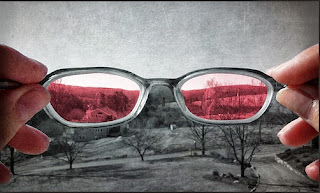 |
| (photo credit: CC-BY-SA עוזי ו, Wikipedia) |
But earlier that day Dov had mentioned it to me, first thing in the morning. “Bracha Kapah died.”
“Baruch Dayan Emes,” I said. Blessed be the True Judge. “That was one special woman. Imagine! She fed the poor of Jerusalem.”
She deserved more than a passing mention in the morning, in between email correspondence and sips of instant coffee. So I stopped for a moment and allowed the loss to wash over me. I shut my eyes, imagining the reception that awaited Rabbanit Kapah in the heavens.
“The righteous sit with crowns upon their heads and enjoy the splendor of the shechina.” (Talmud Brachot 17a)
Angel Escorts?
I imagined heavenly choirs, angel escorts, a diamond and ruby crown held aloft in midair to be placed upon her head, a golden chair where she might rest after a lifetime of good works. Would this be her welcome?For years she’d existed as a one-woman army against poverty in the Holy City.
I thought about Rabbanit Kapah the rest of the week. There was very little media coverage. She had lived in modesty and died without fanfare in this world, despite my overworked imagination about her reception in the Next.
I thought about her as I read an article based on the same premise as one I’d written earlier in the week and which in fact, quoted the same experts I had quoted. The article was written by a well-known academic, a professor.
I'll Dither
I am no professor. But I had dared to voice the same ideas.I’m not always so brave. Often an idea comes to me for a story to write, an important story, yet I will hesitate and think, “It can’t be that nobody wrote up this topic. It’s so important, so obvious. How can it be a new idea??” and I will dither. I will think, “I am no professor to write such thoughts.”
I will search a bit more on Google looking in vain for the story in my head and see that indeed, nobody has written on the subject.
The Words Come
Still finding it hard to believe that my original idea is in fact original, I will begin tapping out the story on the keyboard. At first my touch on the keys will be tentative, the letters and words not flowing. But I begin just anywhere and soon, the words come.After the fact, I will wonder at my initial hesitation in tackling a task that had all but walked itself over to me and tapped me on the shoulder. What stops me at that juncture and tempts me to give the topic a miss—to leave the job to someone else?
I thought about a volunteer job I’d been asked to take on at work, a mentoring position. Most of my colleagues at Kars4Kids volunteer to take an active role in the work of our organization. But I had hesitated. I worried how I would fit another task into my overcrowded schedule. I worried whether I was capable, whether I’d be good at mentoring.
Dirty Breakfast Dishes
I doubt Rabbanit Kapah suffered from this sort of existential angst. Was that the secret to her success? For her, feeding the poor was a task that needed doing: that fell to her. Feeding the poor was a task to be approached like any other: a sink full of dirty breakfast dishes, for instance. You don’t stop to intellectualize the task or worry about whether you can carry it off. You don’t pat yourself on the back, preen at being chosen, or think, “Why me?”You just do it.
Rabbanit Kapah reacted. She responded to the pain of the people who approached her, crying out in hunger, pain, and fear. She was Nachshon jumping into the Red Sea as Pharaoh’s men approached, with all the Jews in despair and indecision milling about in a panic all around him. Rabbanit Kapah did what came to her, what needed to be done. She did it the best she could, for as long as she had the strength. She did it because it was hers to do.
And she showed us the way.












